LCBB6003 - Leadership Styles: Transactional and Transformational
VerifiedAdded on 2023/06/18
|7
|379
|408
Presentation
AI Summary
This presentation provides a critical evaluation of transactional and transformational leadership styles. Transactional leadership focuses on supervision, organization, and performance, using rewards and punishments to motivate followers. Transformational leadership inspires and motivates employees to innovate and create change. The presentation concludes that these styles contrast, with transactional leadership relying on rewards and punishments, while transformational leadership supports an agile environment with less risk associated with failure. References to relevant academic works are included. Desklib provides solved assignments for students.
1 out of 7

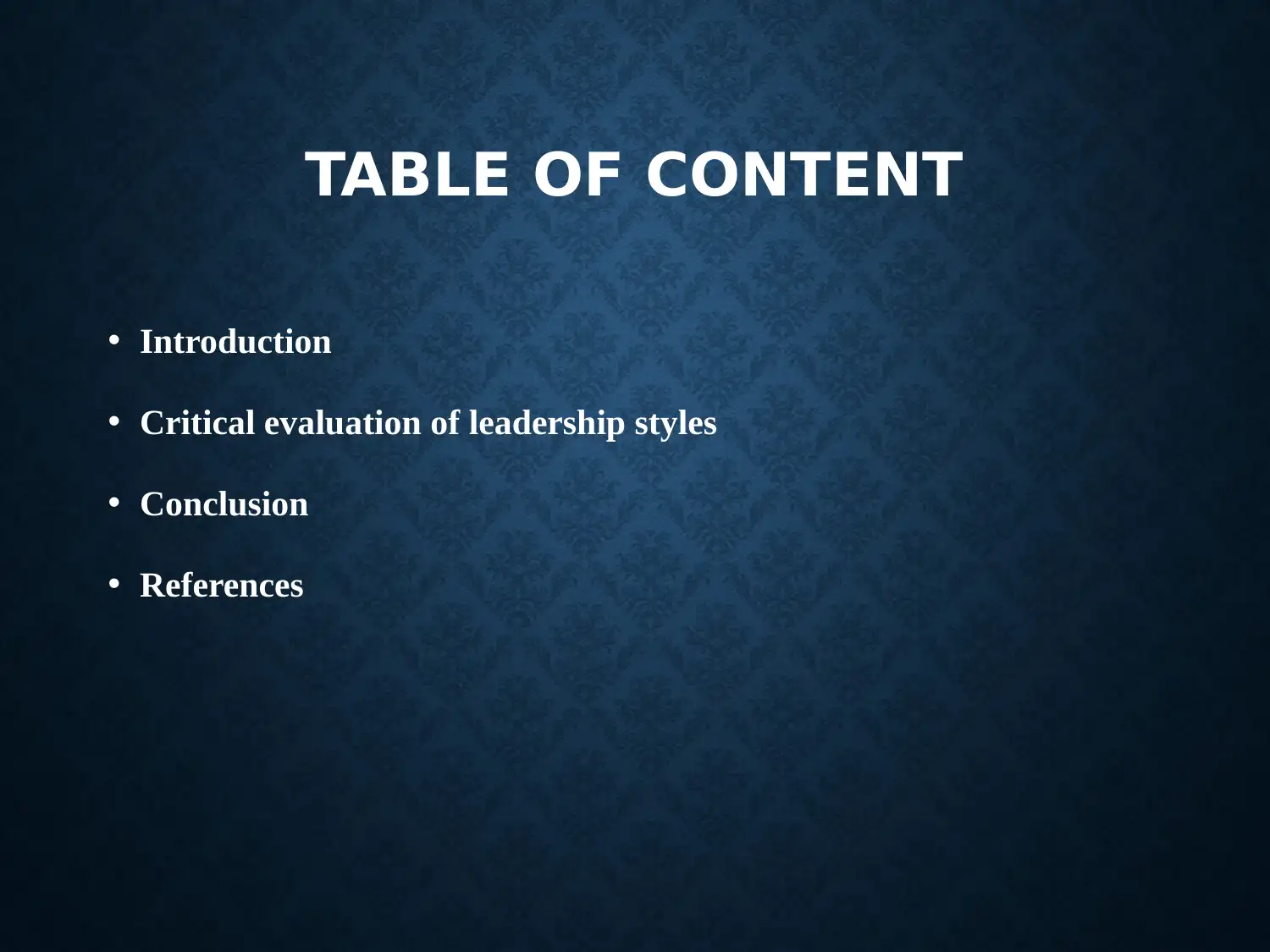
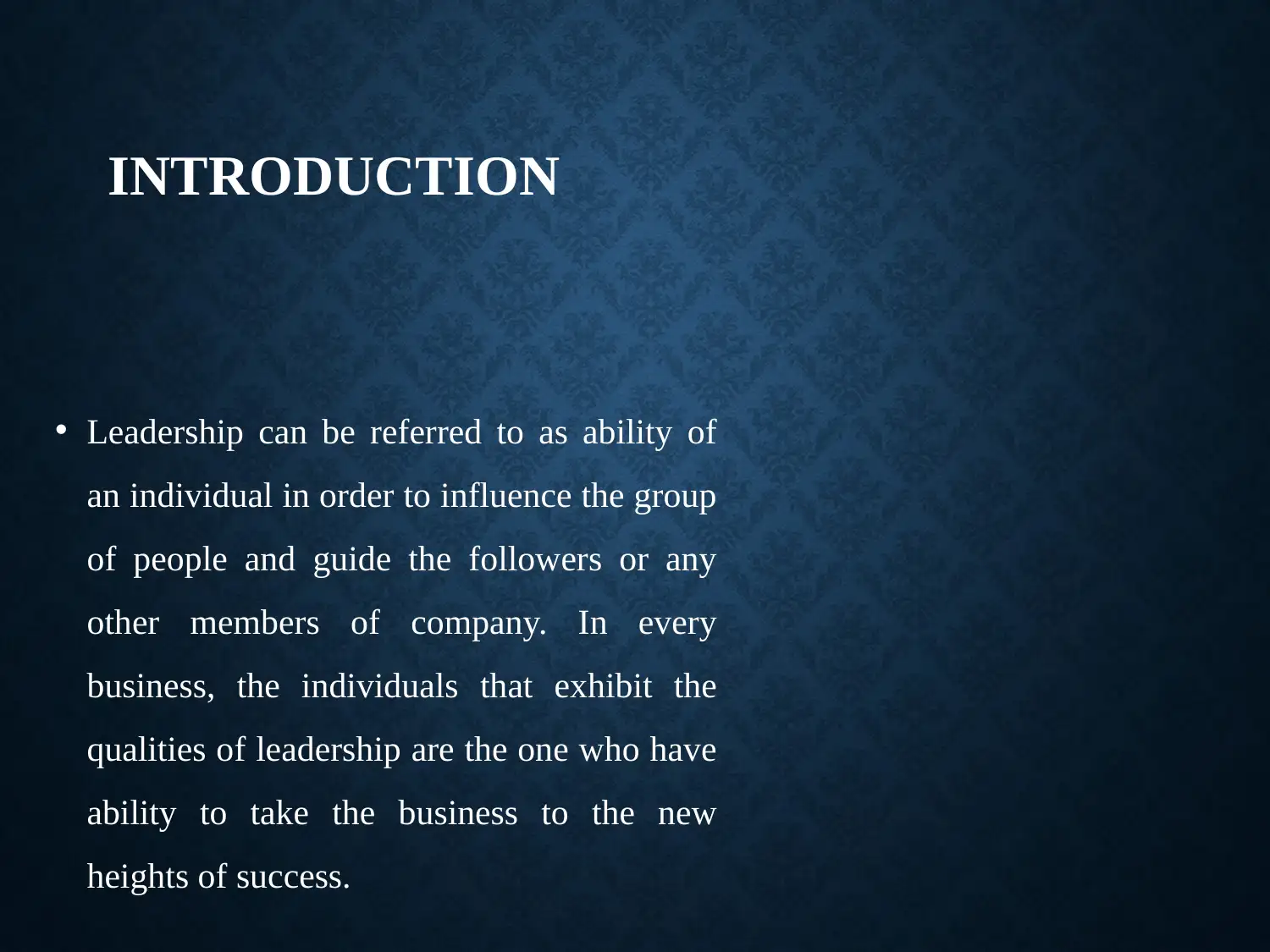

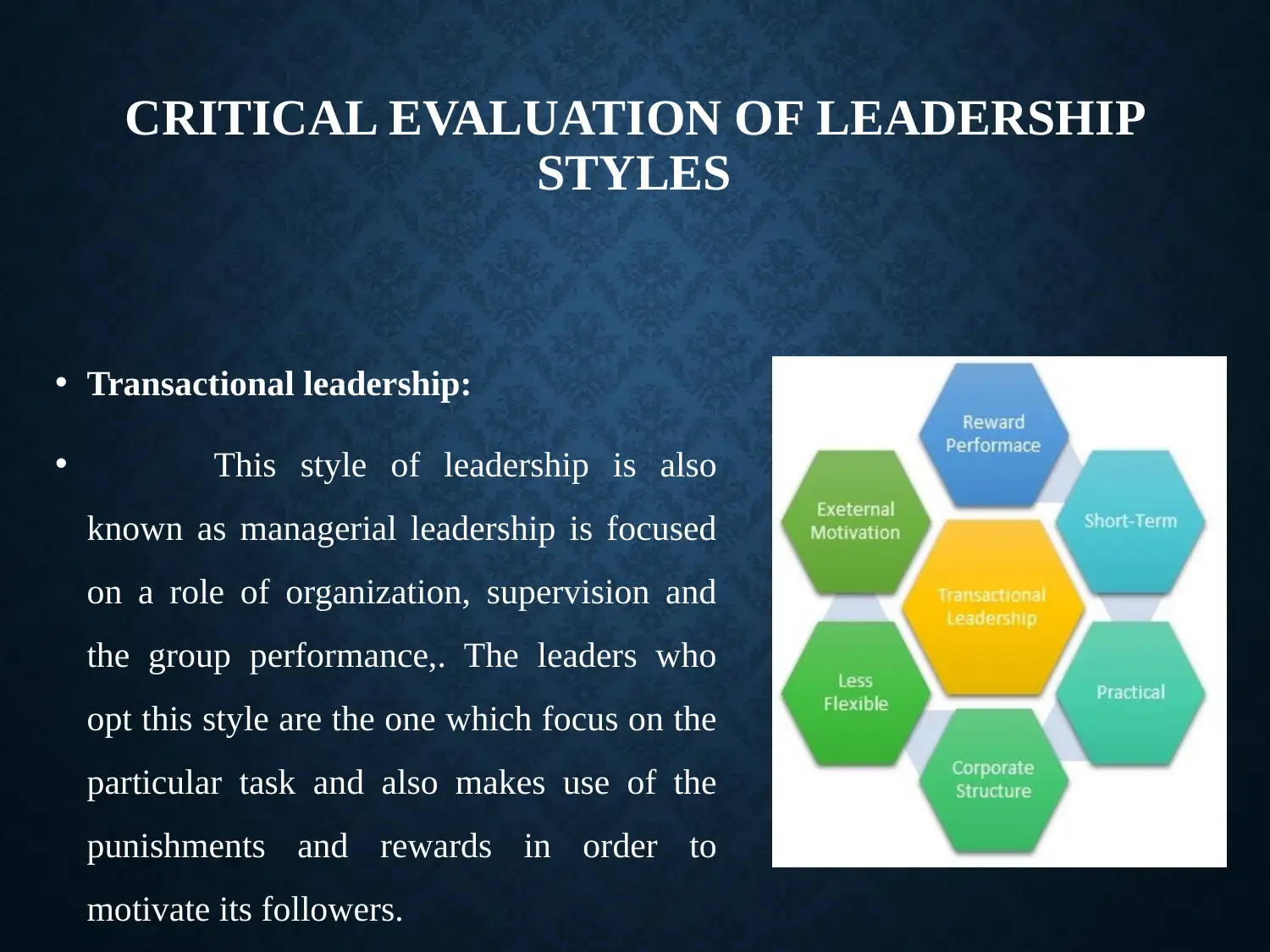
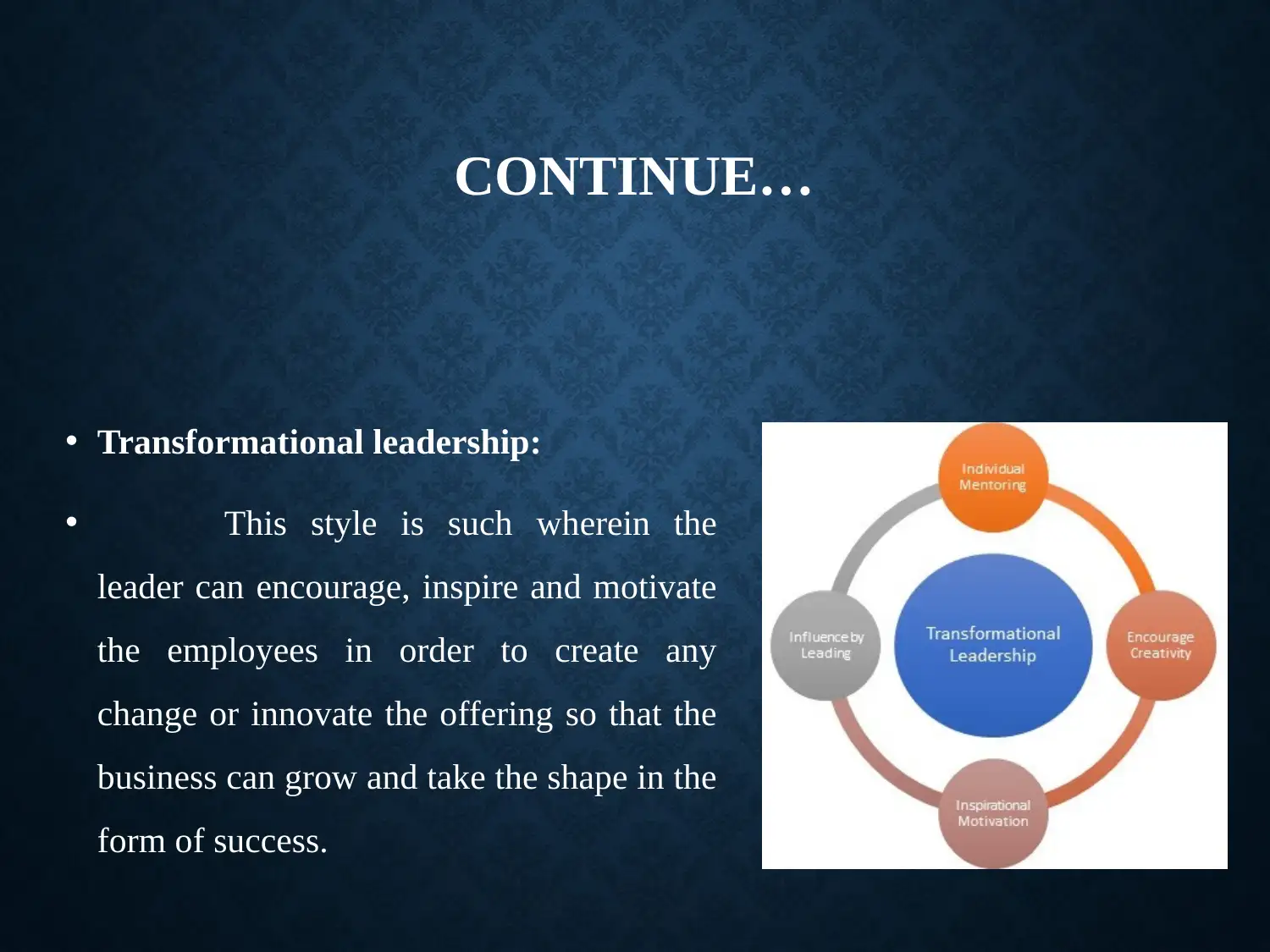
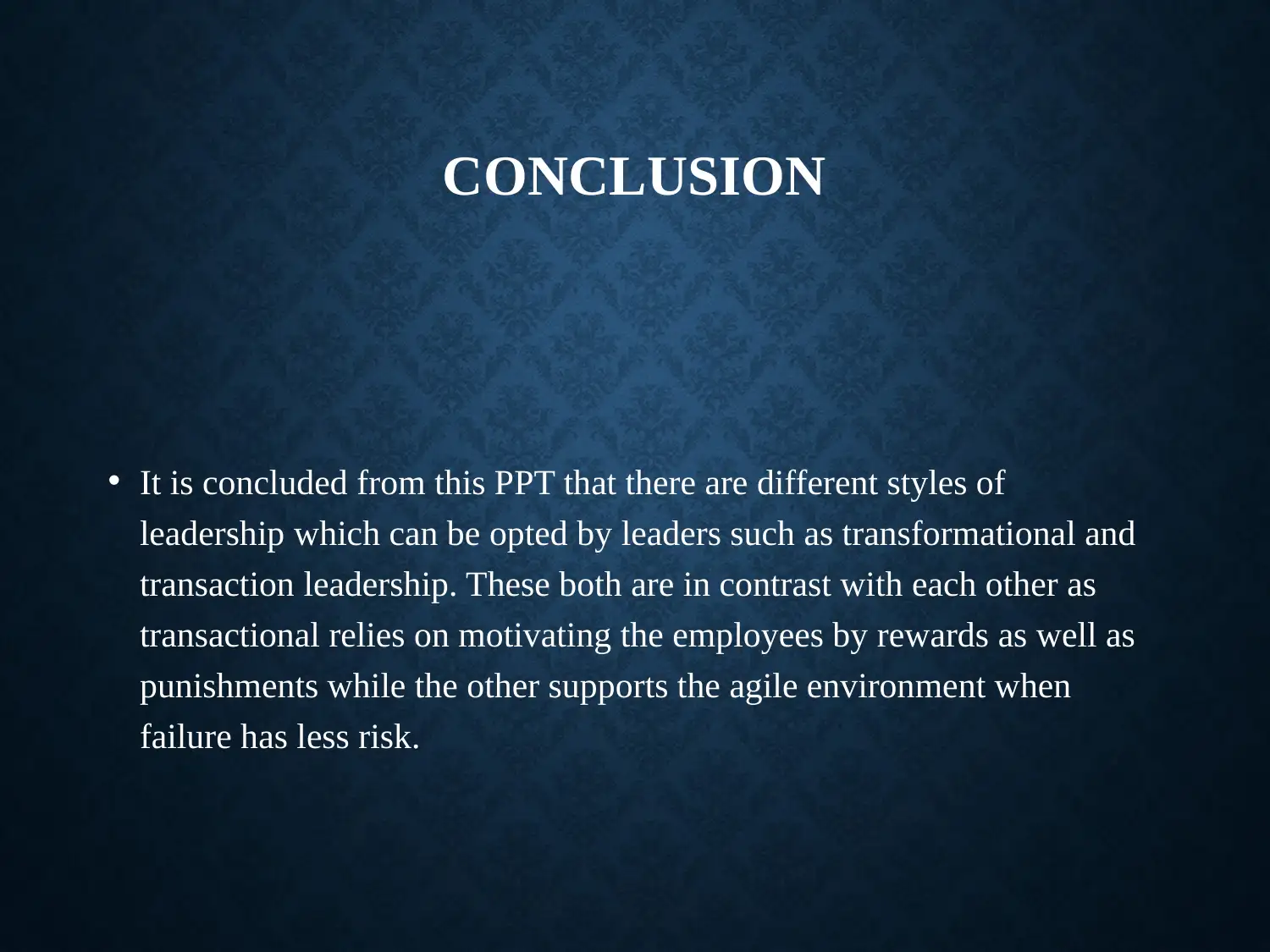
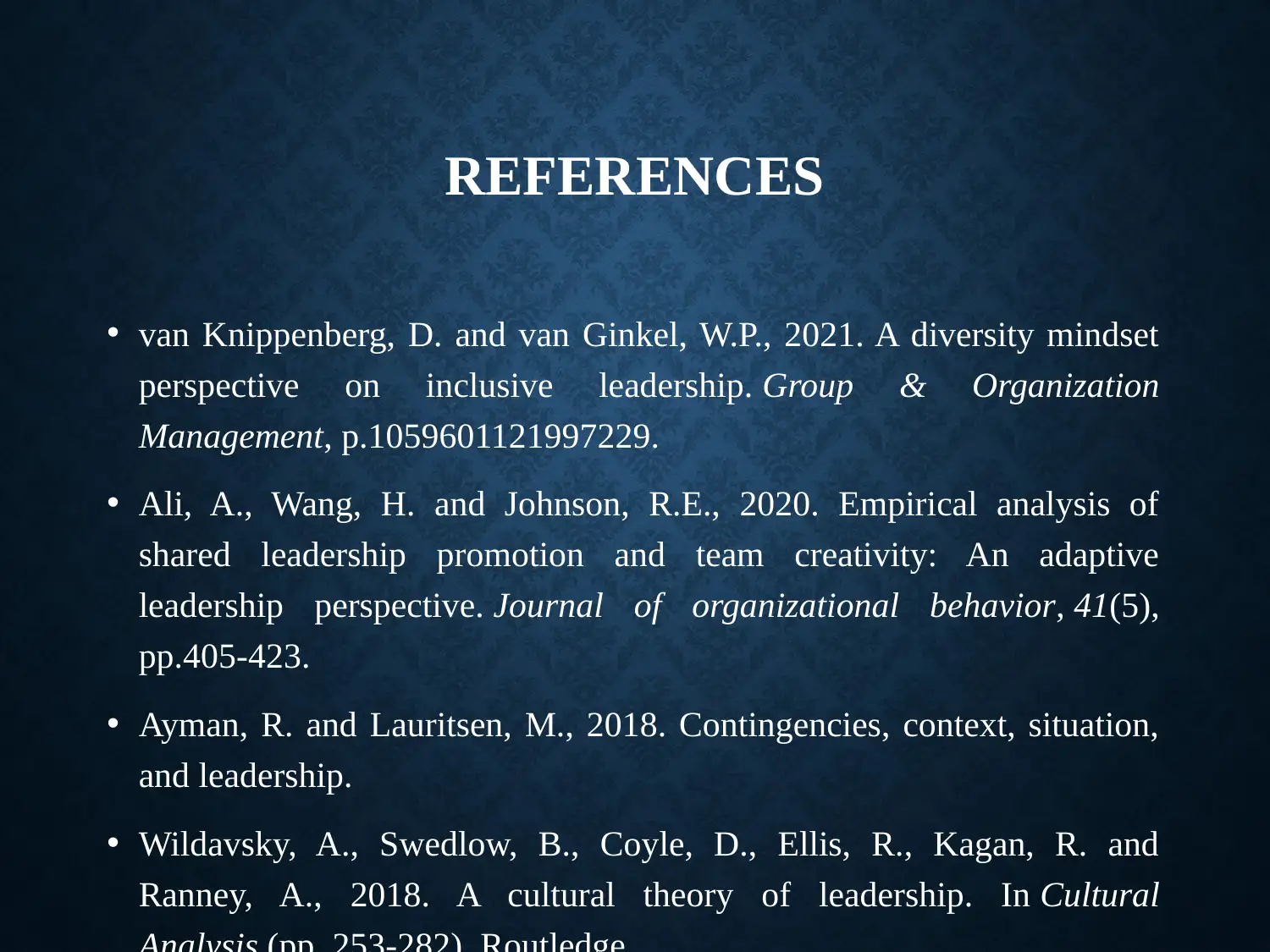






![[object Object]](/_next/static/media/star-bottom.7253800d.svg)